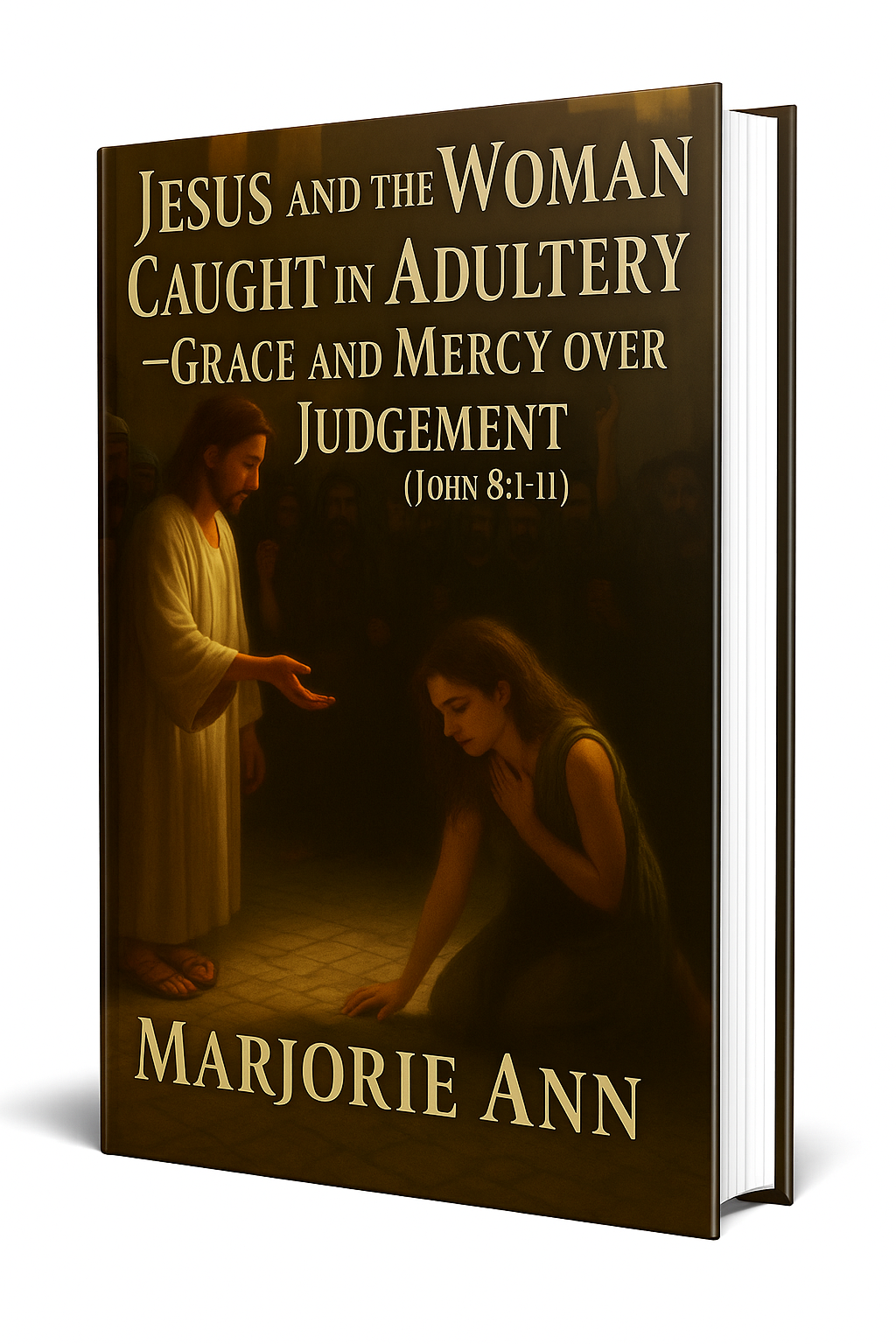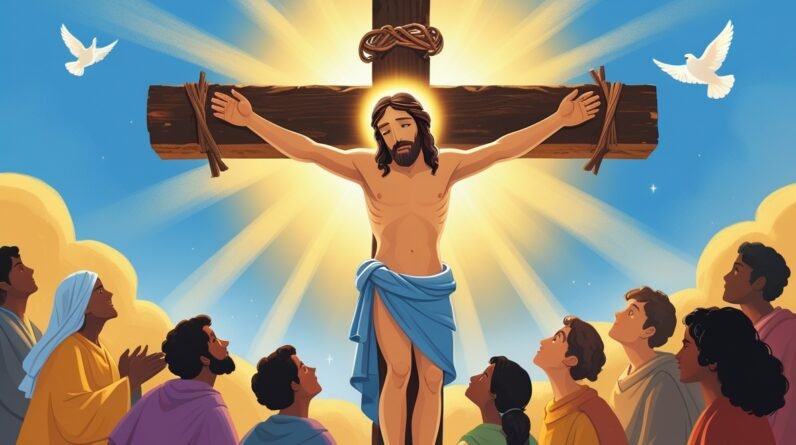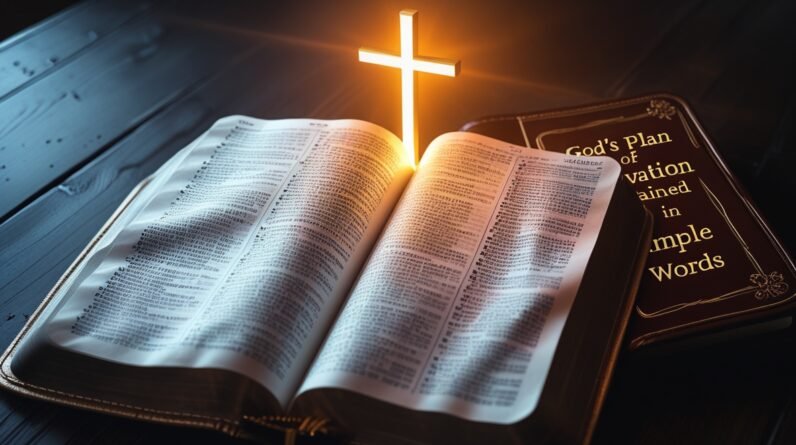God’s Salvation Plan in the Old and New Testaments
You’re about to walk through a story that spans the sweep of Scripture — a story about how God rescues, restores, and reconciles. When you study salvation in the Old and New Testaments, you see a single, unfolding plan: promises, symbols, and sacrifices in the Old Testament that point forward to a decisive fulfillment in the life, death, and resurrection of Jesus Christ. You’ll notice continuity and development, foreshadowing and fulfillment, law and grace — all woven together so that the meaning of redemption becomes clearer as the narrative moves from promise to completion.
What do you mean by “salvation in the Old and New Testaments”?
When you talk about salvation in the Old and New Testaments, you’re talking about how God delivers humanity from what separates them from God — sin, death, and spiritual alienation — and restores people into a relationship with Him. The Old Testament lays the foundation: covenant promises, sacrificial systems, and prophetic anticipation. The New Testament shows the fulfillment of those promises in Christ, explaining how his death and resurrection accomplish what the rituals and types anticipated. Salvation here is both historical (what God did in time) and theological (what it means for human beings), and you’ll find both dimensions in Scripture.
Key terms and themes to watch for
To follow salvation in the Old and New Testament, keep an eye on a few recurring words and themes: covenant (God’s promises and agreements), atonement (making things right), sacrifice (substitutionary offerings), redemption (being bought back), justification (declared righteous), reconciliation (restored relationship), faith (trust in God), and new creation (life transformed). These words form the grammar of God’s salvation plan, and they show up in different ways across both Testaments.
Salvation in the Old Testament: foreshadowing and promise
In the Old Testament, you don’t yet see the complete picture, but you do see unmistakable anticipations. God plants seeds of redemption right after humanity’s fall and continues to cultivate them through patriarchs, laws, priests, prophets, and kings. The sacrificial system, the Passover, the Day of Atonement, and the prophetic visions are all part of the scaffolding that shows you the need for a decisive, once-for-all rescue.
Early promises after the Fall: the protoevangelium
Right after the fall, God gives a hint of hope that you can’t miss: a promise that the offspring of the woman will bruise the serpent’s head. This bit of early prophecy is often called the protoevangelium because it points to a future deliverer who will overcome evil and undo the damage of sin. You can read the promise in Genesis 3:15. That verse sets the tone: even in judgment, God is moving toward redemption.
Sacrifices and the sacrificial system
Throughout the Old Testament, sacrifices are central to how people relate to God. From Abel’s offering to the detailed regulations under Moses, the idea is consistent: sin has consequences, and something costly must happen to make things right. When you read about sacrifices, notice the language of substitution and cleansing. For example, Abel’s offering was pleasing to God because it was given in faith and acknowledgment of need Genesis 4:4. Levitical instructions also stress the laying on of hands and substitutionary imagery: the worshiper places hands on the animal, transferring guilt and identification Leviticus 1:4.
The Passover as a prototype of redemption
One of the clearest Old Testament pictures of salvation is the Passover. When Israel was enslaved in Egypt, God instructed them to mark their doorframes with lamb’s blood so the destroying angel would pass over them. That dramatic deliverance is language you’ll hear echoed in the New Testament when Christ is called the Lamb of God. The Passover’s theological point — blood, sacrifice, deliverance from death — is laid out in Exodus 12:13. For you, Passover shows how God’s salvation often involves the exchange of life for life and points forward to a greater, once-for-all deliverance.
The Day of Atonement and the ongoing need for forgiveness
The sacrificial system also includes a yearly reckoning: the Day of Atonement, when the high priest enters the Holy of Holies to make atonement for the nation’s sins. It’s a solemn reminder that human sin is serious and that repeated sacrifices only underscore the ongoing need for reconciliation. The language of ultimate cleansing is found in passages like Leviticus 16:30, which proclaims a day for atonement and purifying Israel from their sins. This ritual anticipates a final solution to the problem of sin — a point that the New Testament later insists Christ brings to pass.
Kings, prophets, and the suffering servant
As history unfolds, the prophets speak of a future figure who will suffer for the people and bring lasting healing. Psalms and the prophets often contain vivid images that the New Testament reads as pointing to Christ. For example, the opening cry of Psalm 22 expresses deep suffering that Christians see fulfilled in the cross Psalm 22:1, and later lines describe distress that looks startlingly like crucifixion Psalm 22:16. Isaiah’s portrait of the suffering servant is even more explicit: “But he was pierced for our transgressions” and “by his wounds we are healed” Isaiah 53:5. When you read these texts, you’re seeing the Old Testament shape the expectation of a suffering, redemptive figure.
Faith and righteousness in the Old Testament: Abraham and David
Salvation in the Old Testament isn’t only about ritual; it’s also about trust. Abraham is held up as the paradigm of faith when Scripture says that he believed God and it was credited to him as righteousness Genesis 15:6. David’s life teaches about the heart — repentance and the longing for restoration are central themes (see, for example, the penitential tone of many Psalms). These figures help you see that right standing with God has always involved faith and humility, not mere ritual performance.

Transition themes from the Old to the New Testament
You’ll notice a pattern as you move from the Old to the New Testament: types and shadows give way to clarity. The temple, sacrificial priesthood, and prophetic promises don’t disappear; they find their fulfillment in Christ. The New Testament authors explicitly interpret the Old Testament through the lens of Jesus’ life, death, and resurrection, showing how the earlier elements were leading toward him.
Prophetic expectations and typology
Prophecy and typology are how the Bible’s earlier pages point forward. Prophets announced what God would do; typology means people, places, and rituals in Israel served as real prefigures of later realities. You can see this when the apostles read Isaiah or the Psalms and apply them to Jesus’ suffering and vindication. What you might have thought of as merely historical in the Old Testament now becomes theological groundwork for the New — the threads are intentionally woven that way.
The temple, priesthood, and sacrifices point to Christ
The temple and priesthood framed Israel’s relationship with God. But in the New Testament, Jesus is portrayed as both priest and sacrifice, bringing the work of reconciliation to completion. He is the one who enters where no human can enter and secures a lasting redemption. Hebrews makes this point explicitly, contrasting the temporary nature of animal sacrifices with the once-for-all efficacy of Christ’s work. The shift is significant: what was typological and repetitive in the Old Testament becomes decisive and final in the New.
Salvation in the New Testament: fulfillment in Christ
The New Testament announces what the Old Testament anticipated. Jesus is introduced as the Lamb, the Messiah, the righteous servant who takes on sin and conquers death. The cross and resurrection aren’t tragic ends but decisive acts in God’s salvation plan. Here, the sacrificial language is applied to a single, perfect offering whose effects are universal and eternal.
Jesus as the Lamb and fulfillment of sacrifices
John the Baptist points directly to Jesus as “the Lamb of God, who takes away the sin of the world” John 1:29. That image isn’t accidental: it ties Jesus back to Passover, to sacrificial substitution, and to the notion that the blood of the lamb saves. Paul echoes this logic when he calls Christ our Passover lamb in a different letter: “For Christ, our Passover lamb, has been sacrificed” 1 Corinthians 5:7. For you, this means the rituals pointed forward to a person who would accomplish what they only symbolized.
The crucifixion and resurrection as decisive acts
The New Testament portrays the death and resurrection of Jesus as the hinge of redemptive history. The cross is where substitution and atonement meet; the resurrection is where new life is promised and inaugurated. You can read the moment of death in narratives like Matthew 27:50 and the empty tomb’s proclamation in Matthew 28:6. For you, the cross is the cost and the resurrection is the proof: together they complete what the Old Testament types pointed toward.
Theological explanations: justification, reconciliation, adoption
The New Testament authors offer theological language to explain what Jesus has done. Paul speaks of justification — that you are declared righteous through faith — because of Christ’s sacrificial work. He famously writes that all have sinned and fall short of God’s glory Romans 3:23 and explains that God presented Christ as a sacrifice of atonement Romans 3:25. Paul also shows how God’s love is demonstrated in Christ — “while we were still sinners, Christ died for us” Romans 5:8. Other writers highlight reconciliation and new identity: “God reconciled us to himself through Christ” 2 Corinthians 5:18-21, and Peter reminds you that Christ suffered once for sins, the righteous for the unrighteous, to bring you to God 1 Peter 3:18.
Hebrews and the once-for-all nature of Christ’s work
If you want to see how the New Testament authors link Old Testament types to Christ, read Hebrews. It contrasts the repeated animal sacrifices with Christ’s single, all-sufficient offering. “He entered once for all into the holy places, not by means of the blood of goats and calves but by means of his own blood” Hebrews 9:12. Later the letter declares that by that one sacrifice, believers are made holy forever: “we have been made holy through the sacrifice of the body of Jesus Christ once for all” Hebrews 10:10. This “once-for-all” language is crucial: the Old Testament system pointed to a need; the New Testament says that need is finally met in Jesus.
Cosmic victory: disarming powers and triumph
The New Testament also describes Christ’s work as a cosmic victory over powers that enslave and accuse. Paul says Christ disarmed the rulers and authorities and made a public spectacle of them, triumphing over them by the cross Colossians 2:13-15. For you, that means salvation isn’t merely legal — it’s also liberation and restoration, a defeat of forces that oppose God’s good purposes.
How you respond: faith, baptism, and the Spirit
The New Testament not only explains what Christ has done but also how you enter into it. Peter calls for repentance and baptism in the name of Jesus for the forgiveness of sins, followed by receiving the Holy Spirit Acts 2:38. Paul shows baptism as participation in Christ’s death and resurrection: when you’re baptized, you’re symbolically buried with Christ and raised to new life Romans 6:3-5. Baptism is an external sign of an internal reality — you’re united to Christ. Galatians puts it succinctly: when you are baptized into Christ, you have put on Christ Galatians 3:27. Salvation involves both a historical act (what Christ did) and a personal appropriation (what you trust and receive).
Continuity and discontinuity: what changed and what stayed the same
You might be wondering: Did God’s plan change? The short answer is no and yes. The one true God continues to redeem his people according to his promises; that’s continuity. But the way redemption is administered — the covenantal framework and religious practices — undergoes a decisive shift in Christ; that’s discontinuity.
Continuity: one plan, same God, same promises
Everything you read from Genesis through Revelation points to the same God working a single plan. The promises to Abraham, the hope of Israel, the prophetic visions — they all move toward the same end: people reconciled to God. Paul argues that the law and the prophets were pointing to Christ and that the gospel of Jesus is the fulfillment of those promises. You can see this continuity in the way New Testament writers quote the Old Testament and interpret its texts as part of a unified story.
Discontinuity: sacrificial system and covenantal shift from law to grace
At the same time, the method changes. The sacrificial system, the old priesthood, and the temple-centered worship have a different status after Christ. Hebrews emphasizes that the old system served a purpose until the new covenant arrived, but it wasn’t the final form. The new covenant brings grace and direct access to God through the Spirit; human attempts to secure righteousness through ritual are replaced by trusting in Christ’s finished work. That’s not to say the Old Testament was wrong — rather, it was provisional and preparatory.
How you can trace salvation in Scripture (practical study tips)
If you want to explore salvation in the Old and New Testaments for yourself, there are helpful ways to read.
- Read forward: start with Old Testament promises (Genesis, Exodus, prophet books) and then read the Gospels to see fulfillment.
- Read backward: read the Gospels and Acts, then trace the verses that New Testament authors cite from the Old Testament (for instance, read Isaiah with Matthew’s references).
- Use cross-references: when you find a sacrificial image in the Old Testament, look at New Testament passages that apply that image to Jesus.
- Compare themes: track words like “righteousness,” “atonement,” “redeem,” “covenant,” and “new” across books.
- Read a theological commentary or a study Bible notes that highlight fulfillment passages and typology.
When you do this, you’ll see how the Old Testament’s sacrifices, rituals, and prophecies point to a single climactic act in Christ.
Why this matters for you today
Understanding salvation in the Old and New Testament isn’t just an academic exercise — it shapes how you live, worship, and hope. It affects your assurance of forgiveness, your identity in Christ, and your participation in the mission of God. You gain confidence that God’s promises are reliable and that the redemption achieved by Christ is sufficient for your deepest needs.
Assurance, identity, and mission
When you recognize that the entire Bible moves toward a single redemptive goal, your faith is strengthened. You can trust that God’s promises are not isolated or temporary but part of a consistent plan. That assures you: the justification, reconciliation, and new life offered in Christ are based on history and Scripture, not on wishful thinking. It also shapes your identity — you’re not merely improved, you’re a new creation in Christ, adopted into God’s family. And finally, it fuels mission: because you’ve been reconciled, you’re commissioned to be an agent of reconciliation to others, sharing the story of God’s salvation with the world.
Practical reflections: living with the story of redemption
You can live in light of the story by practicing gratitude, repentance, and obedience. Let the cross and resurrection inform how you handle guilt and failure: Christ’s once-for-all sacrifice is not a license to ignore sin but a basis for genuine repentance. Celebrate regularly — in worship, in communion — the ways God’s salvation has been accomplished and is being worked out in your life. Let Scripture frame your moral choices, knowing that God’s redemptive work forms the moral matrix in which you live.
Conclusion: one story, two Testaments, a single Savior
When you step back, the big picture becomes clear: salvation in the Old and New Testaments is not two separate plans stitched together but one coherent drama. The Old Testament’s sacrifices and prophecies foreshadow the decisive fulfillment in Christ’s death and resurrection. The New Testament reads the Old through the lens of Jesus, showing you how the lamb that was slain and then raised is the culmination of God’s redemptive work. For you, that means the promises of God are trustworthy, the cost of redemption was real, and the gift of new life is available now to all who repent and believe.
Explore More
For further reading and encouragement, check out these posts:
👉 7 Bible Verses About Faith in Hard Times
👉 Job’s Faith: What We Can Learn From His Trials
👉 How To Trust God When Everything Falls Apart
👉 Why God Allows Suffering – A Biblical Perspective
👉 Faith Over Fear: How To Stand Strong In Uncertain Seasons
👉 How To Encourage Someone Struggling With Their Faith
👉 5 Prayers for Strength When You’re Feeling Weak

📘 Jesus and the Woman Caught in Adultery – Grace and Mercy Over Judgement
A powerful retelling of John 8:1-11. This book brings to life the depth of forgiveness, mercy, and God’s unwavering love.
👉 Check it now on Amazon
As a ClickBank & Amazon Affiliate, I earn from qualifying purchases.
Acknowledgment: All Bible verses referenced in this article were accessed via Bible Gateway (or Bible Hub).
“Want to explore more? Check out our latest post on Why Jesus? and discover the life-changing truth of the Gospel!”






